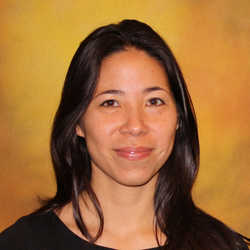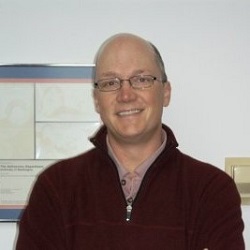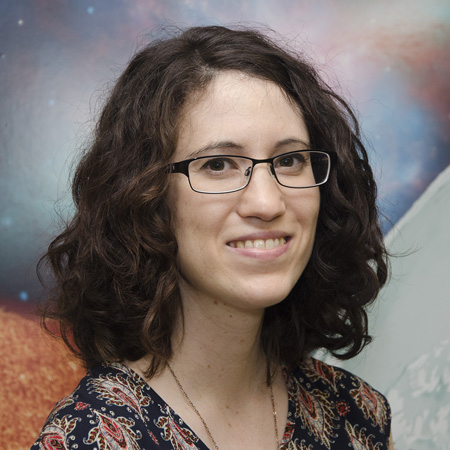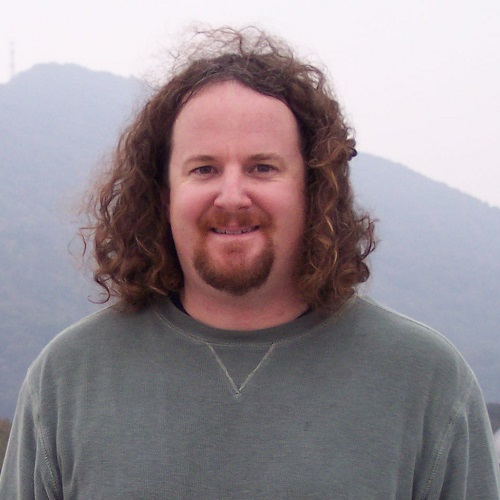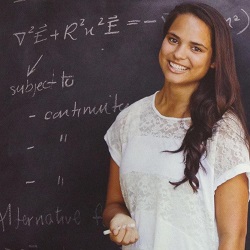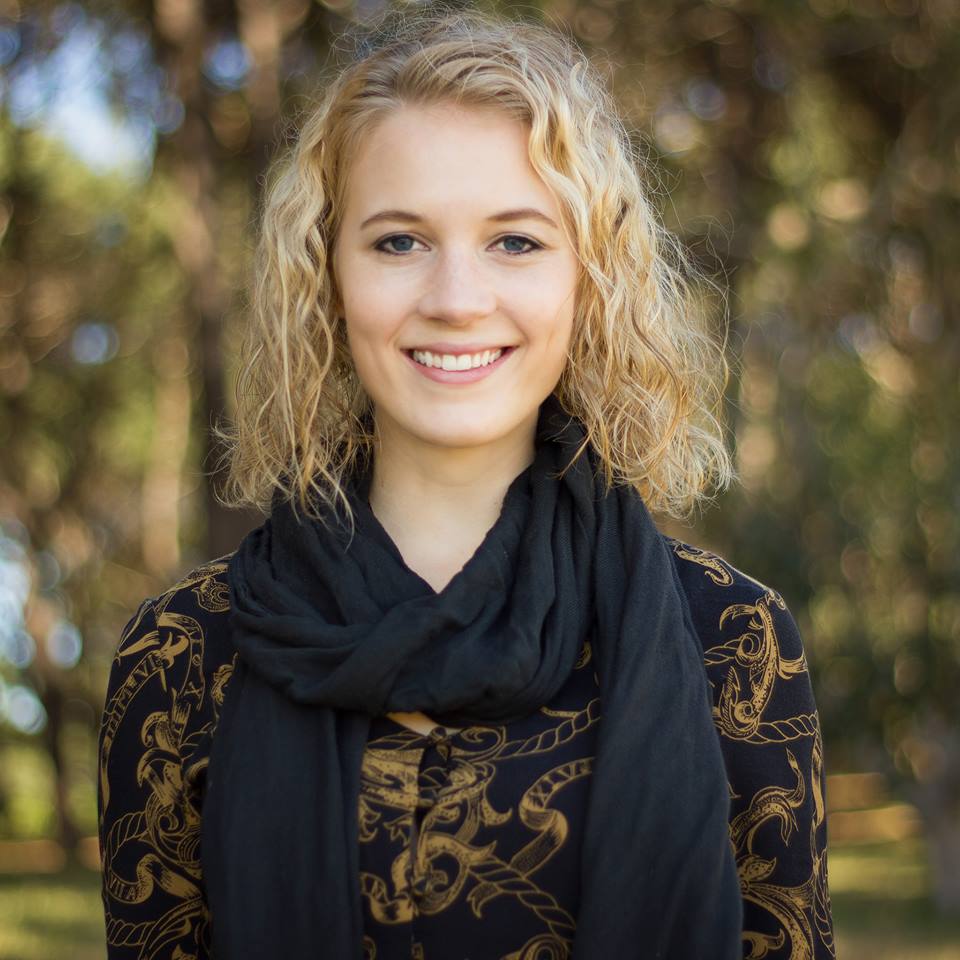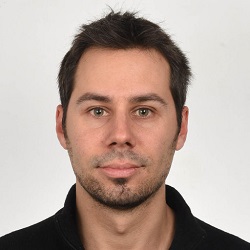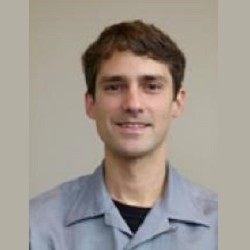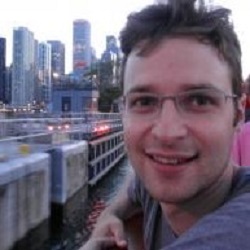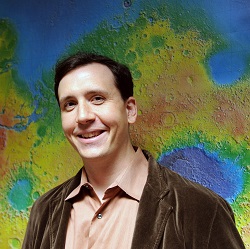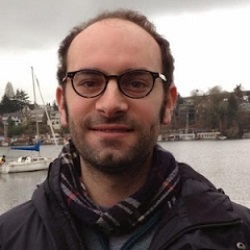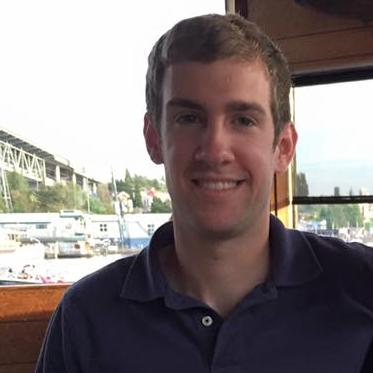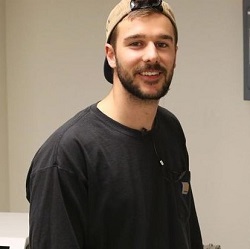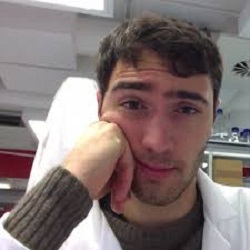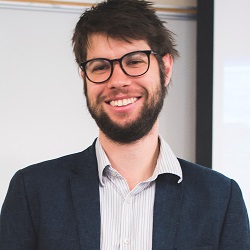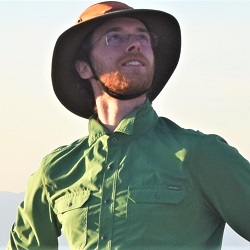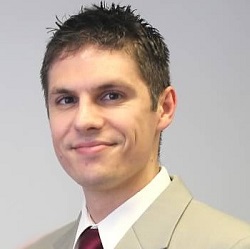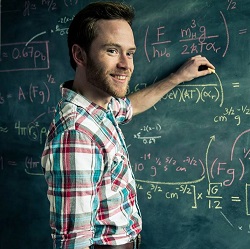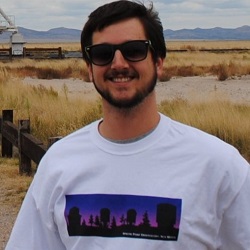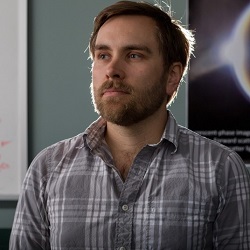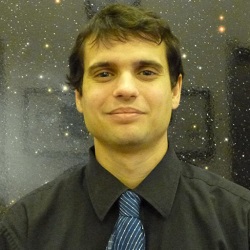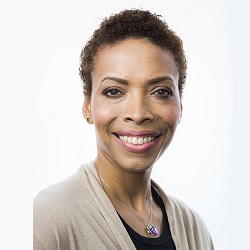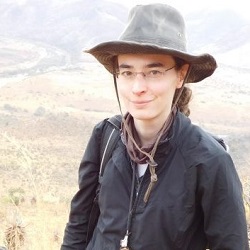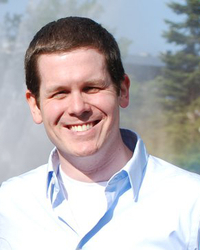Email: randerson@carleton.edu Website CV VPL Focus: Task B
Bio: I’m an assistant professor at Carleton College in the Biology department. The overarching goal of my research is to understand how life co-evolves with its environment over time. We use next-generation sequencing tools to better understand the processes that drive microbial and viral evolution over time. We collaborate with astronomers, geologists, chemists, and atmospheric scientists to ask big-picture questions in astrobiology and oceanography. My work with VPL focuses on the analysis of phylogenetic trees to better constrain when specific microbial metabolisms were radiating across the tree of life. I collaborate with geochemists to corroborate these findings with the geochemical record. Our hope is to better understand which microbial metabolisms were most important at specific points in Earth’s history and to connect that with possible observable biosignatures.
Email: jcarmstrong@weber.edu
VPL Focus: Task C
Bio:
My primary research focus is working with the Virtual Planetary Laboratory to help characterize the properties of planets around other stars. In addition, I analyze data from several Mars missions to explore the history of the Martian climate. I am also interested in problems related to high performance computing and visualization
Email: giada.n.arney@nasa.gov
Website:
CV / Publications: https://science.gsfc.nasa.gov/sed/bio/giada.n.arney
VPL Focus: Task A, Task B (Lead), Task E
Bio:
My research has involved modeling and measuring properties of planets with an emphasis on worlds enshrouded by global cloud and haze layers because aerosols appear to be a common planetary phenomeon. I have a dual focus on both solar system bodies and on exoplanets. I have retrieved properties of Venus’ sub-cloud atmosphere through observations of its nightside spectral windows, producing the first simultaneous and temporally resolved maps of cloud opacity, acid concentration, water vapor (H2O), hydrogen chloride (HCl), carbon dioxide (CO), carbonyl sulfide (OCS), and sulfur dioxide (SO2). I also have extensive modeling experience of planetary atmospheres and have comprehensively simulated hazy Archean Earth with a coupled photochemical-climate model to study its atmospheric composition, climate, and habitability. Using a sophisticated radiative transfer model together with a coronagraph noise model and a JWST model, I showed that organic haze on an Earthlike planet produces strong spectral signatures that may be detectable with future telescopes. In addition, I helped lead a paper on Proxima Centauri b’s possible climatic and environmental states and their spectral discriminants, and I have been involved in work identifying oxygen false positive biosignature signals. My current and near-future research focuses on modeling the atmospheric and climatic states of exoplanets, understanding the observational requirements to discriminate between different planetary states with current and future observatories, and re-visiting Venus with new observations.
Email: kbott@ucr.edu
VPL Focus: Task E
Bio:
My research combines observation, instrumentation, and theoretical approaches to characterizing exoplanets and finding realistic means to determine their habitability. My recent work has specialized in polarimetry of potentially habitable terrestrial exoplanets. I have helped develop radiative transfer code for both transits and polarimetry; am experienced in instrument design, fabrication, and testing (polarimeters and other instruments); and have observed a variety of objects (galaxies, red dwarf stars, planet hosting systems, etc.) using a variety of instruments (e.g. aperture polarimeters, IFUs, vis & IR photometers, etc.). My work has disputed the first detection of polarized light from an exoplanet, eliminated certain cloud scenarios for a hot Jupiter, provided guidelines for reliable polarized light detection from exoplanets, improved the modelling software available for radiative transfer (including polarization), and provided estimates of polarimetric signals from realistic terrestrial and super Earth scenarios utilizing climate models, with comparisons of polarimetry to other characterization methods. I am deeply aware of the needs of software development and laboratory inputs to enable the use of models in the detection and characterization of exoplanets and the icy moons of our Solar System, as well as of the observational needs for such endeavors.
Email: benjamin.charnay@lmd.jussieu.fr
VPL Focus: Task B, Task C, Task E
Bio:
My research topic is the physics and dynamics of planetary atmospheres. I have been focussing on the dynamics of Titan’s troposphere and the climates of the early Earth. Now, I am also studying the atmospheres and climates of exoplanets (i.e. dynamics, photochemistry, clouds and haze). I study these atmospheres with 3D Global Climate Models (GCMs).
Research interests:
- Titan’s troposphere (dynamics, planetary boundary layer, surface winds and dune formation)
- Climatic evolution of Titan
- Climates of the early Earth (faint young Sun problem and formation of organic haze)
- Habitability of exoplanets
- Exoplanetary atmospheres (super-Earths and Neptune-size planets)
Email: mc229@st-andrews.ac.uk
VPL Focus: Task B, Task C
Bio:
I work on improving models of terrestrial planets, with the aim of reducing uncertainties in our ability to interpret spectra of extrasolar planets. I work with the VPL photochemical and climate models, and am broadly interested in questions of atmospheric evolution and planetary habitability.
Selected publications:
Claire, M.W. , Sheets, J., Cohen, M., Ribas, I., and Catling, D.C., “The evolution of solar flux from 2 nm to 160 microns: quantitative estimates for planetary studies” Astrophysical Journal, in press, 2012.
Zerkle A., Claire M., Domagal-Goldman S., Farquhar J., and Poulton S. “A bistable organic-rich atmosphere on the Neoarchaean Earth, Nature Geosciences, 2012. DOI: 10.1038/NGEO1425.
Domagal-Goldman, S.D., Meadows, V.C, Claire, M.C., Kasting, J.F. “Astronomical biosignatures for sulfur-rich anoxic biospheres.” Astrobiology, 11(5), 2011.
Beal, E., Claire, M, and House, C.. “High rates of anaerobic methanotrophy at low sulfate concentration with implications for past and present methane levels” Geobiology, DOI: 10.1111/j.1472-4669.2010.00267.x, 2011.
Tian, F., Claire, M., Haqq-Misra, J., Smith, M.,Crisp, D., Catling, D., Zahnle, K., Kasting, J. . “Photochemical and climate consequences of sulfur outgassing on early Mars.” Earth and Planetary Sciences Letters, 295 (3-4), 412-418, 2010.
Catling, D.C., Claire, M. W., Zahnle, K. J., Quinn, R. C., Clark, B. C., Hecht, M. H., Kounaves, S. “Atmospheric origins of perchlorate on Mars and in the Atacama”, J. Geophys. Res., 115,E00E11, 1-15, 2010
Marion, G.M., Catling, D.C., Zahnle, K.J., and Claire, M.W. “Modeling aqueous perchlorate chemistries with applications to Mars”, Icarus, 207 (2) 675-685, 2010.
Goldblatt C., Claire, M. , Lenton, T. , Matthews, A., Watson, A., Zahnle, K. “Nitrogen-enhanced greenhouse warming on the early Earth” Nature Geosciences, 2 (12), 891-896, 2009.
Catling, D.C., Claire, M.W., and Zahnle, K.J., “Anaerobic methanotrophy and the rise of atmospheric oxygen” Philosophical Transactions of the Royal Society of London – A, 365, 1867-1888, 2007.
Mix, L. J. et al., “The Astrobiology Primer: An Outline of General Knowledge – Version 1, 2006”, Astrobiology, 6 (5),735-813, 2006.
Claire, M.W., Catling, D.C., and Zahnle, K.J., “Biogeochemical modeling of the rise in atmospheric oxygen” Geobiology, 4, 239-269, 2006.
Zahnle, K.J., Claire, M.W., and Catling, D.C. “The loss of mass-independent fractionation in sulfur due to a Paleoproterozoic collapse of atmospheric methane” Geobiology, 4, 271-283, 2006.
Catling, D.C and Claire, M.W., “How Earth’s atmosphere evolved to an oxic state – A status report” , Earth and Planetary Sciences Letters – Frontiers, 237, 1-20, 2005.
Email: russell.deitrick@gmail.com
VPL Focus: Task C
Bio:
I work on the dynamics of exoplanets and star systems, and also do a bit of climate modeling to understand how habitability can be impacted orbital evolution. I work with other VPL members: Rory Barnes (my dissertation advisor), Cecilia Bitz, Thomas Quinn, Victoria Meadows, John Armstrong, Rodrigo Luger, and Sean Raymond. I’m currently developing a model, with Rory Barnes, Rodrigo Luger, Tom Quinn, Peter Driscoll, and David Fleming, to couple the myriad of physical processes which affect planetary evolution. We are using this model to study the habitability of planets like Proxima Centauri b.
Email: shawn.goldman@nasa.gov
VPL Focus: Task B (Lead), Task D, Task E
Bio:
Shawn Domagal-Goldman in a Research Space Scientist in the Planetary Environments Laboratory at NASA’s Goddard Space Flight Center in Greenbelt, MD. He is an astrobiologist that focuses on comparative planetology. As a member of multiple interdisciplinary teams, he simulates the atmospheres of other worlds, including those of ancient Earth, modern Mars, ancient Mars, and exoplanets. He utilizes the outputs from those simulations to interpret data from some of Earth’s most ancient rocks, from the Mars Curiosity rover, and to simulate the capabilities of future space-based telescopes designed to look for life on exoplanets. Shawn is a collaborator by nature, and a member of many research and mission teams, including the Curiosity science team, the HabEx Science and Technology Definition Team, the Large UV-Optical-Infrared Surveyor (LUVOIR) Study Office, is on multiple research teams in the Nexus for Exoplanet Systems Science (NExSS).
Email: dflemin3@uw.edu
VPL Focus: Task C
Bio:
As a member of the UW eScience Institute’s Integrative Graduate Education and Research Traineeship (IGERT) in Big Data and Data Science, I work on dealing with the large parameter space required to accurately model exoplanet systems using the code VPLANET (see Barnes et al. 2016). The massive parameter space afforded by VPLANET’s inclusion of numerous physical modules ranging from atmospheric escape to orbital dynamics necessitates the use machine learning techniques to analyze the output of a large number of simulations and to intelligently traverse this parameter space. I am particularly interested in the application of machine learning techniques to wrangle this large parameter space to draw inferences about exoplanet habitability and understand the underlying physical processes that influence habitability.
Email: bwj@iastate.edu
VPL Focus: Task B
Bio:
I am an Earth System scientist, geologist and geochemist. My work seeks to understand the evolution of the Earth over deep time and how it can serve as context for newly discovered exoplanets. Utilizing geochemical, geologic, and modeling techniques I have investigated the history of the Earth system nitrogen cycle, microbial activity during Snowball Earth, and volatile cycling on our planet.
Email: mkipp@caltech.edu
VPL Focus: Task B
Bio:
I’m a Postdoctoral Fellow in the Division of Geological & Planetary Sciences at Caltech. My research involves using geochemical tools to unravel the co-evolution of life and its planetary environment across our planet’s history. The topics I study range from the oxygenation of the atmosphere & ocean to the evolution of major nutrient (N & P) cycles to recent climatic perturbations.
Email: koehlerm@uw.edu
VPL Focus: Task B
Bio:
I’m a biogeochemist, exploring the co-evolution of life and environments on the early Earth! My DESKTOP background is a leafy seadragon.
Email: jkt@ucsc.edu
VPL Focus: Task A, Task B
Bio:
I am a planetary scientist and astrobiologist from New Zealand, currently living in San Jose. You can read more about my scientific background here. I am a theoretician, and so the pictures below are thoroughly unrepresentative of my day job!
Email: olehmer@uw.edu
VPL Focus: Task B, Task D
Bio:
My research focus is on modeling the formation, evolution, and detection of habitable planets in an effort to find and characterize the next Earth-like planet.
Email: alinc@uw.edu
VPL Focus: Task C, Task E
Bio:
Andrew is a graduate student pursuing a dual-title Ph.D. in Astronomy & Astrobiology working with Professor Meadows on exoplanet atmospheres. Currently he is working on modeling habitable and uninhabitable terrestrial environments around M dwarf stars by enhancing the new VPL 1D climate model (intially developed by Dr. David Crisp and Dr. Tyler Robinson) and merging it with atmospheric chemistry.
During summer of 2015, Andrew measured the pure rotational spectra of the rare stable isotopologues of Titanium Monoxide (TiO) at the University of Arizona using the Ziurys group direct absorption millimeter wave spectrometer and their Fourier Transform microwave spectrometer. This required melting or laser ablation of high purity titanium with the presence of oxygen to form vapor-phase TiO. This is relevant for astrophysics because TiO is a potential nucleation particle for the formation of interplanetary dust and is potentially a measure of the nucleosynthetic processes in the late-stage evolution of massive stars.
During summer of 2014, Andrew worked with Dr. Aki Roberge at NASA/Goddard Space Flight Center on the Haystacks project for simulating exoplanet observations by working on the code for generating a high-resolution spectral image model of the Solar System. High-fidelity planetary system spectra, including the star, the planets, and the effects of dust, are important in understanding the requirements for future observing missions under development.
Email: rodluger@gmail.com
VPL Focus: Task E
Bio:
I am a postdoctoral fellow at the Centerfor Computational Astrophysics in New York City, working on finding novel ways to discover and characterize exoplanets. I am broadly interested in exocartography, astrobiology, systematics modeling, & general analytic techniques for astronomy. Outside of the office I love to hike, cycle, swim, craft lattes, faulty parallelism, and Oxford commas.
Email: jlustigy@uw.edu
VPL Focus: Task E
Bio:
My research revolves around the central theme of extracting physical insights from astronomical observations of terrestrial exoplanets. From the planets in the Solar System we know that planets can be rich with complexity. But like the study of stars, exoplanets are (at best) point sources of light. That is, all light from the planet falls onto a single pixel of a telescope CCD. To learn about the underlying nature of terrestrial exoplanets we must carefully examine that one pixel.
Email: tyler.robinson@nau.edu
VPL Focus: Task A
Bio:
I am a scientist whose research interests include planetary science, exoplanets, planetary climate, remote sensing, radiative transfer, atmospheric characterization, high contrast imaging, observational astronomy, brown dwarfs habitability, and astrobiology. I have worked on a variety of interdisciplinary projects, both as a scientist and as an educator. My recent work has focused on using data and models from the Earth, atmospheric, and planetary sciences to better understand characterization techniques for exoplanets.
Email: eschwiet@ucr.edu
VPL Focus: Task A, Task B, Task D
Bio:
I’m a member of the UCR Alternative Earths Team at the University of California, Riverside. My supervisor is Dr. Timothy Lyons. I’m also a member of the Virtual Planetary Laboratory. My research interests and activities include studying Earth as an exoplanet (throughout geologic time), determining planetary properties from disk-integrated spectra, climate, photochemical, and radiative transfer modeling of terrestrial planet atmospheres, and generating synthetic spectra of model exoplanets. I’m particularly interested in work that can inform our ability to characterize Earth-sized planets that reside in the habitable zones of their host stars, especially in search of remotely detectable biosignatures.
Email: shields@uci.edu
VPL Focus: Task C
Bio:
Dr. Aomawa Shields is the Clare Boothe Luce Associate Professor in the Department of Physics & Astronomy at UCI. She is an astronomer and an astrobiologist whose research focuses on exploring the possible climates and potential habitability of Earth-sized planets orbiting cool, low-mass stars. She uses a hierarchy of computer models along with observational data from space- and ground-based observatories to carry out her research.
Dr. Shields received her Ph.D. in Astronomy and Astrobiology from the University of Washington in 2014, an MFA in Acting from UCLA in 2001, and an Sc.B. in Earth, Atmospheric, and Planetary Sciences from MIT in 1997. She held an NSF Astronomy and Astrophysics Postdoctoral Fellowship and a UC President’s Postdoctoral Fellowship at UCLA and at the Harvard-Smithsonian Center for Astrophysics prior to joining the UCI faculty in 2017. She was awarded the prestigious NSF CAREER award to pursue an innovative program of research and education at UCI. Her research is also supported by the NASA Habitable Worlds program.
A 2015 TED Fellow, Dr. Shields’ TED Talk “How We’ll Find Life on Other Planets” has garnered over 1.7 million views. She is Founder and Director of the organization Rising Stargirls, which encourages girls of all colors and backgrounds to explore and discover the universe using theater, writing, and visual art. Aomawa is the proud mother of 3-year-old rising stargirl Garland-Rose, who she and husband Steven have deemed the most
Email: ees4@st-andrews.ac.uk
VPL Focus: Task B
Bio:
I am interested in the origin and early evolution of life and environments on Earth and implications for the habitability of other planets. My tools include sedimentary geology, stable isotopes (carbon, nitrogen, sulphur, selenium) and transition metal geochemistry. I am also keen to apply these tools to better understand ore-forming processes through time and space.
Email: mtilley@uw.edu
VPL Focus: Task C, Task E
Bio:
